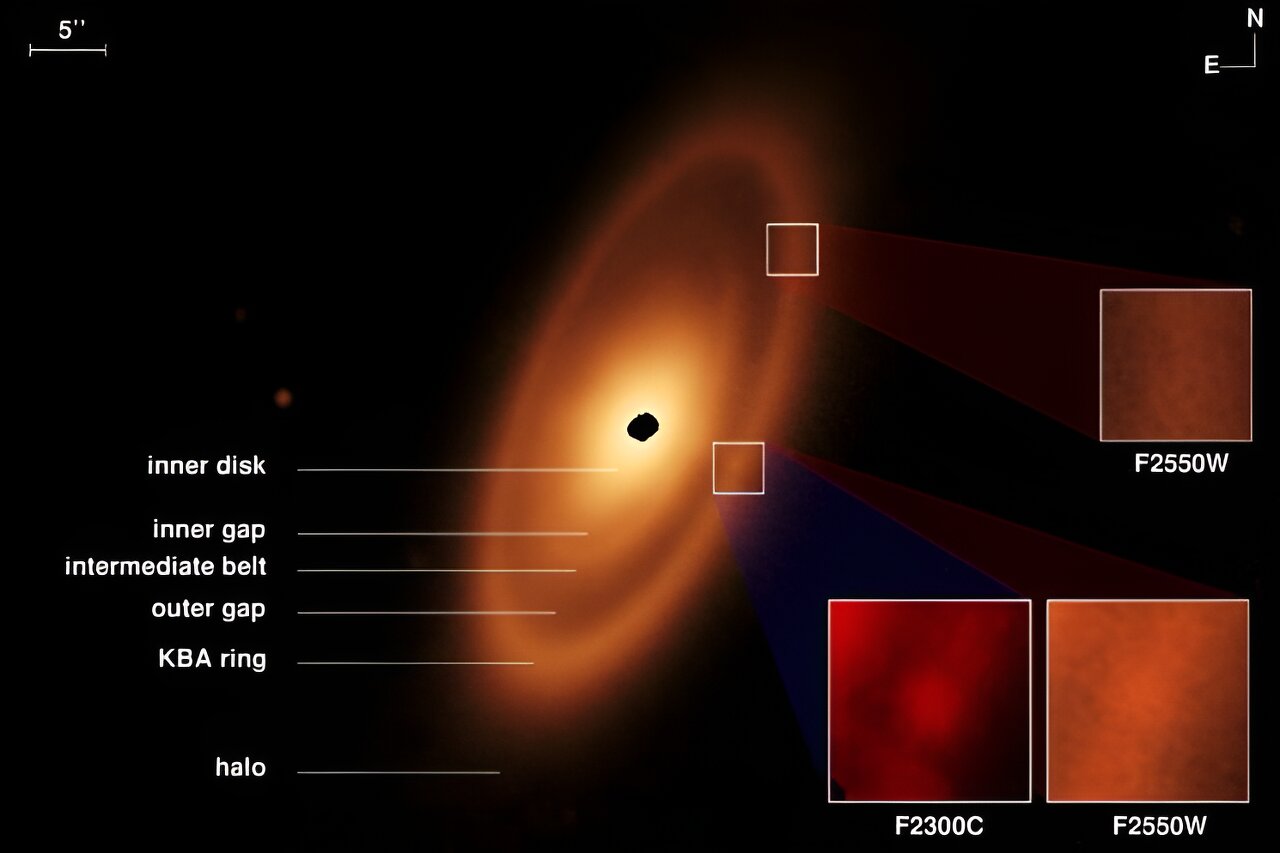The James Webb Space Telescope was used to search for planets in the Fomalhaut system. This star has been puzzling scientists for some time: are there any large bodies near it besides dust and small debris? Unfortunately, it has not been possible to put an end to this story.

Mysterious Fomalhaut
A group of scientists used the James Webb Space Telescope to search for planets near Fomalhaut. This white star is the brightest in the constellation Piscis Austrinus. From the territory of Ukraine, it is usually visible near the horizon.
The name of the star is translated from Arabic as the “mouth of fish”, but until 2016, it was used widely but unofficially. In general, in recent years, this luminary has been studied especially carefully. At first glance, this is a fairly ordinary white star that has an age of 440 million years, but it will use up its charge of thermonuclear fuel very quickly and will end its existence in a billion years.
What makes Fomalhaut interesting for scientists is the confusing situation of what orbits around it. This luminary has two companion stars: the orange TW of the Southern Fish and the red dwarf LP 876-10. However, they orbit it at a huge distance.
Dust disks and planets
Much more interesting for astronomers is the massive dust disk surrounding the star. Its existence has been known for many years. However, in 2008, something strange was found in it, which was declared the planet Fomalhaut b. Its existence was confirmed by the Hubble Space Telescope in 2012. However, since then, scientists have had serious doubts about its existence.
In particular, there was an assumption that something that was perceived as an exoplanet was, in fact, a cloud of debris of unknown origin. It could just be that it was formed as a result of the collision of two planetesimals. However, it is impossible to establish this for sure. None of the later pictures have it; therefore, it has dissipated.
The main problem in the study of Fomalhaut is the dust, which makes it impossible to see anything. The James Webb Space Telescope is better suited than any other to conduct such research. Its NIRCam can see through clouds of fine particles in the near-infrared spectrum, and the MIRI instrument, operating in the mid-infrared range, can see the dust.
What the latest research shows
In May 2023, James Webb was already used to search for planets in the Fomalhaut system. However, no trace of them could be found then. Instead, scientists found another inner disk there, in which a collision could have occurred, which was once mistaken for a planet.
A new series of observations confirmed the existence of both previously discovered gas-dust disks and again found no traces of the planet. Scientists saw the remains of the debris cloud that had already been observed earlier and the likely traces of a new collision.
However, scientists will continue to search. After all, Fomalhaut is the closest star to us, whose gas-dust disk is so clearly visible. It is quite possible that it will help us unravel the mysteries of the appearance of our star system.
According to phys.org
Follow us on Twitter to get the most interesting space news in time
https://twitter.com/ust_magazine


